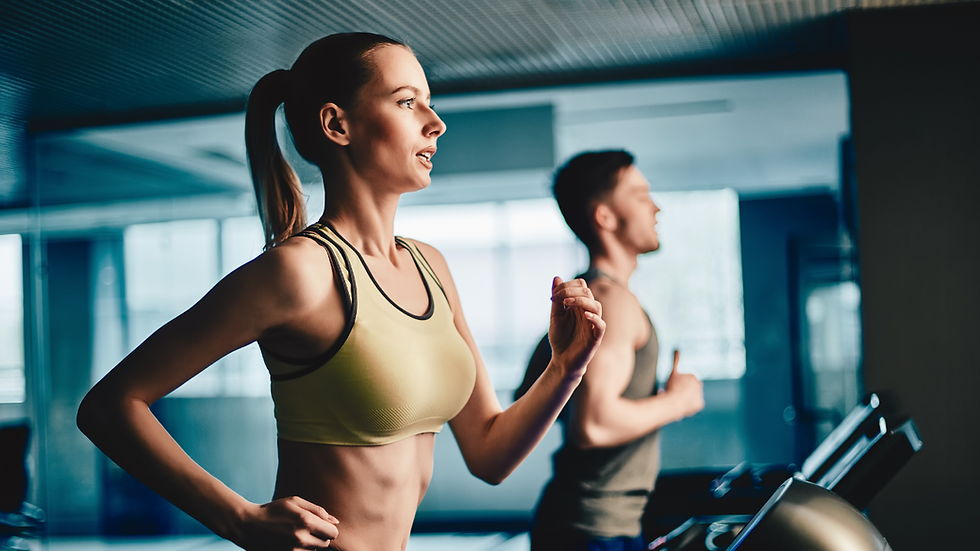How to Use a Muscle Massager for Post-Workout Recovery
- Harley

- Sep 23
- 3 min read
After an intense workout, your muscles undergo stress and microscopic damage, leading to soreness and fatigue. Proper recovery is essential to ensure muscle repair, reduce discomfort, and prepare your body for the next session. While rest, hydration, and nutrition play significant roles, incorporating tools like a muscle massager can enhance the recovery process.
A muscle massager offers targeted relief by stimulating blood flow, alleviating tension, and promoting faster healing. When used correctly, it can be an effective addition to your post-workout routine.
Key Takeaways
Enhanced Blood Circulation: Aids in delivering oxygen and nutrients to muscles.
Reduced Muscle Soreness: Helps in alleviating delayed onset muscle soreness (DOMS).
Improved Flexibility: Regular use can enhance muscle pliability.
Convenience: Portable and easy to use at home or on the go.
Time Efficiency: Provides quick relief without the need for professional massages.
Understanding Muscle Recovery
Why Post-Workout Recovery Matters
Engaging in physical activity causes microtears in muscle fibers. The recovery phase allows these fibers to repair and grow stronger. Without adequate recovery, muscles remain tight, leading to potential injuries and decreased performance.
Common Signs of Muscle Fatigue and Soreness
Post-exercise discomfort, known as DOMS, typically manifests 12–24 hours after a workout. Symptoms include muscle stiffness, tenderness, and reduced range of motion. Addressing these signs promptly can prevent prolonged soreness and enhance overall performance.
What is a Muscle Massager?
Types of Muscle Massagers
Muscle massagers come in various forms, each designed to cater to specific needs:
Percussion Massagers: Deliver rapid, concentrated pulses deep into muscle tissues.
Vibration Massagers: Provide continuous oscillations to soothe surface-level tension.
Handheld Devices: Offer portability and ease of use for targeted relief.
How Muscle Massagers Work
These devices utilize mechanical movements to mimic manual massage techniques. By applying pressure and motion, they stimulate blood flow, break down lactic acid build-up, and promote muscle relaxation, facilitating a quicker recovery process.
How to Use a Muscle Massager for Post-Workout Recovery
Preparation Before Using a Muscle Massager
Before using the device, ensure your muscles are warm. A light 5–10 minute cardio session can increase blood flow, making the massage more effective. Stay hydrated to support muscle function and toxin elimination.
Step-by-Step Guide to Using a Muscle Massager
Select the Appropriate Attachment: Choose a head that suits the muscle group you're targeting.
Adjust Intensity Settings: Start with a low setting to gauge comfort.
Apply to Muscle Groups: Move the device slowly over muscles, spending 1–2 minutes on each area.
Maintain Proper Angle: Hold the massager perpendicular to the muscle for optimal results.
Tips for Maximizing Effectiveness
Combine massage with stretching to enhance flexibility.
Use the massager on major muscle groups like quads, hamstrings, and back.
Avoid using the device on bony areas or joints.
Safety and Precautions
Who Should Avoid Muscle Massagers
Individuals with certain conditions should consult a healthcare professional before using a muscle massager:
Pregnancy: Avoid use on the abdomen.
Recent Surgeries: Wait until fully healed.
Skin Conditions: Avoid areas with rashes or open wounds.
Deep Vein Thrombosis: Refrain from using on affected limbs.
Common Mistakes to Avoid
Excessive Pressure: Applying too much force can cause bruising or discomfort.
Prolonged Use: Limit sessions to 15–20 minutes per muscle group.
Ignoring Pain: Discontinue use if you experience sharp or intense pain.
Benefits of Regular Muscle Massager Use
Reduced Muscle Tension: Helps in alleviating tightness and stiffness.
Enhanced Recovery Time: Speeds up the healing process between workouts.
Improved Circulation: Promotes better oxygen and nutrient delivery to muscles.
Increased Range of Motion: Regular use can lead to better flexibility and movement.
Integrating Muscle Massagers Into Your Recovery Routine
Post-Workout: Use the massager within 30 minutes after exercise to reduce soreness.
Rest Days: Incorporate light sessions to maintain muscle health.
Consistency: Regular use can yield long-term benefits in muscle recovery and performance.
Conclusion
Incorporating a muscle massager into your post-workout routine can significantly enhance recovery, reduce soreness, and improve overall muscle health. By understanding its proper use and benefits, you can make informed decisions to support your fitness journey.
FAQs
1. How long should I use a muscle massager on each muscle group?
Limit use to 1–2 minutes per muscle group to avoid overstimulation.
2. Can I use a muscle massager before a workout?
Yes, using it before a workout can help warm up muscles and increase blood flow.
3. Is it safe to use a muscle massager on the neck?
Use caution and apply gentle pressure when massaging the neck area to avoid injury.
4. How often should I use a muscle massager?
Using it 2–3 times a week can be beneficial, but listen to your body and adjust as needed.
5. Can a muscle massager replace professional massages?
While effective, it doesn't fully replace the expertise of a licensed massage therapist but can serve as a convenient alternative for regular maintenance.





Comments